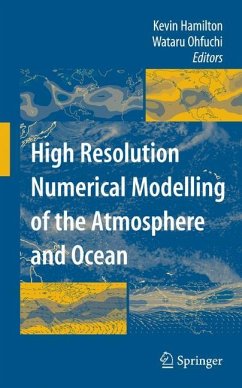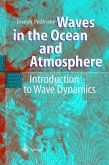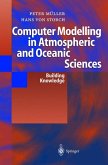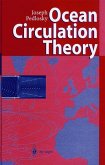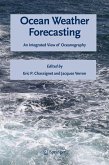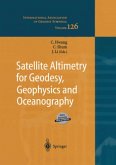Many key issues in dynamical meteorology and physical oceanography depend on interactions among diverse spatial scales. Atmospheric examples are the role of small-scale gravity waves in the zonal-mean momentum balance in the middle atmosphere, the role of tropical cyclones in the large scale energy and momentum balances of the troposphere, or even the direction of spectral cascades of variance in the mesoscale. In the ocean issues of this type include: understanding the detailed physics of the very narrow boundary currents that occur along many coastlines, and the role of mesoscale eddies in determining the strength of the large-scale circulations and meridional ocean heat transports.
Truly comprehensive observational diagnostic studies of these issues are essentially impossible, since they would require the global observational overage at extremely high spatial resolution. An alternative is to study such issues in high resolution models that may span 3 or moreorders of magnitude in terms of spatial scales.
There has been a great deal of progress recently on development and application of such fine resolution models. This had been spurred in part by the recent availability of exceptionally powerful computers. Noteworthy in this respect is the Earth Simulator in Yokohama, Japan, which commenced operations in 2002 and provides a peak performance of 40 Terraflops, but competitive supercomputers for scientific applications are now becoming available in the USA and Europe as well. There has developed in the last few years an increased understanding of the scientific value of results from very high resolution comprehensive numerical simulations.
This book documents the first international meeting focused specifically on high-resolution atmospheric and oceanic modeling held at the Earth Simulator Center. Rather than producing a standard conference proceedings it includes papers written by invited speakers at the meeting reporting on their most exciting recent results involving high resolution modeling.
Truly comprehensive observational diagnostic studies of these issues are essentially impossible, since they would require the global observational overage at extremely high spatial resolution. An alternative is to study such issues in high resolution models that may span 3 or moreorders of magnitude in terms of spatial scales.
There has been a great deal of progress recently on development and application of such fine resolution models. This had been spurred in part by the recent availability of exceptionally powerful computers. Noteworthy in this respect is the Earth Simulator in Yokohama, Japan, which commenced operations in 2002 and provides a peak performance of 40 Terraflops, but competitive supercomputers for scientific applications are now becoming available in the USA and Europe as well. There has developed in the last few years an increased understanding of the scientific value of results from very high resolution comprehensive numerical simulations.
This book documents the first international meeting focused specifically on high-resolution atmospheric and oceanic modeling held at the Earth Simulator Center. Rather than producing a standard conference proceedings it includes papers written by invited speakers at the meeting reporting on their most exciting recent results involving high resolution modeling.

